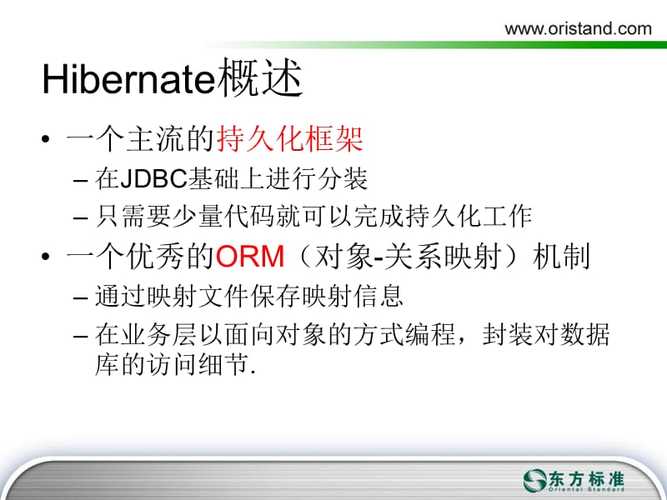KeyConceptsinHibernate:
admin
阅读:685
2024-04-14 00:36:23
评论:0
Introduction to Hibernate Programming
Hibernate is a popular open-source object-relational mapping (ORM) framework for Java applications. It simplifies the development of database interactions by mapping Java objects to database tables and vice versa. Here is a brief overview of Hibernate programming:

- Entities: In Hibernate, entities are plain old Java objects (POJOs) that represent tables in the database. Each entity class typically corresponds to a table in the database.
- Session Factory: The Session Factory is a thread-safe factory for creating Hibernate Sessions. It is typically created once during application startup and used throughout the application's lifecycle.
- Sessions: A Session is a single-threaded, short-lived object representing a conversation between the application and the database. It is used to perform database operations.
- Transactions: Transactions in Hibernate are used to ensure data consistency and integrity. They group a set of database operations into a single unit of work that either succeeds completely or fails completely.
- HQL (Hibernate Query Language): HQL is an object-oriented query language used to perform database operations in Hibernate. It is similar to SQL but operates on entities and their properties.
- Optimize Database Interactions: Use lazy loading and caching strategies to optimize database interactions and improve performance.
- Handle Session Management: Properly manage Hibernate Sessions to avoid memory leaks and performance issues. Consider using session-per-request or session-per-conversation patterns.
- Use Batch Processing: When dealing with a large number of entities, consider using batch processing to improve performance and reduce database round-trips.
- Optimize Queries: Write efficient HQL queries and use indexes on database columns to optimize query performance.
By following these best practices and understanding the key concepts of Hibernate programming, you can develop efficient and scalable Java applications with seamless database interactions.
